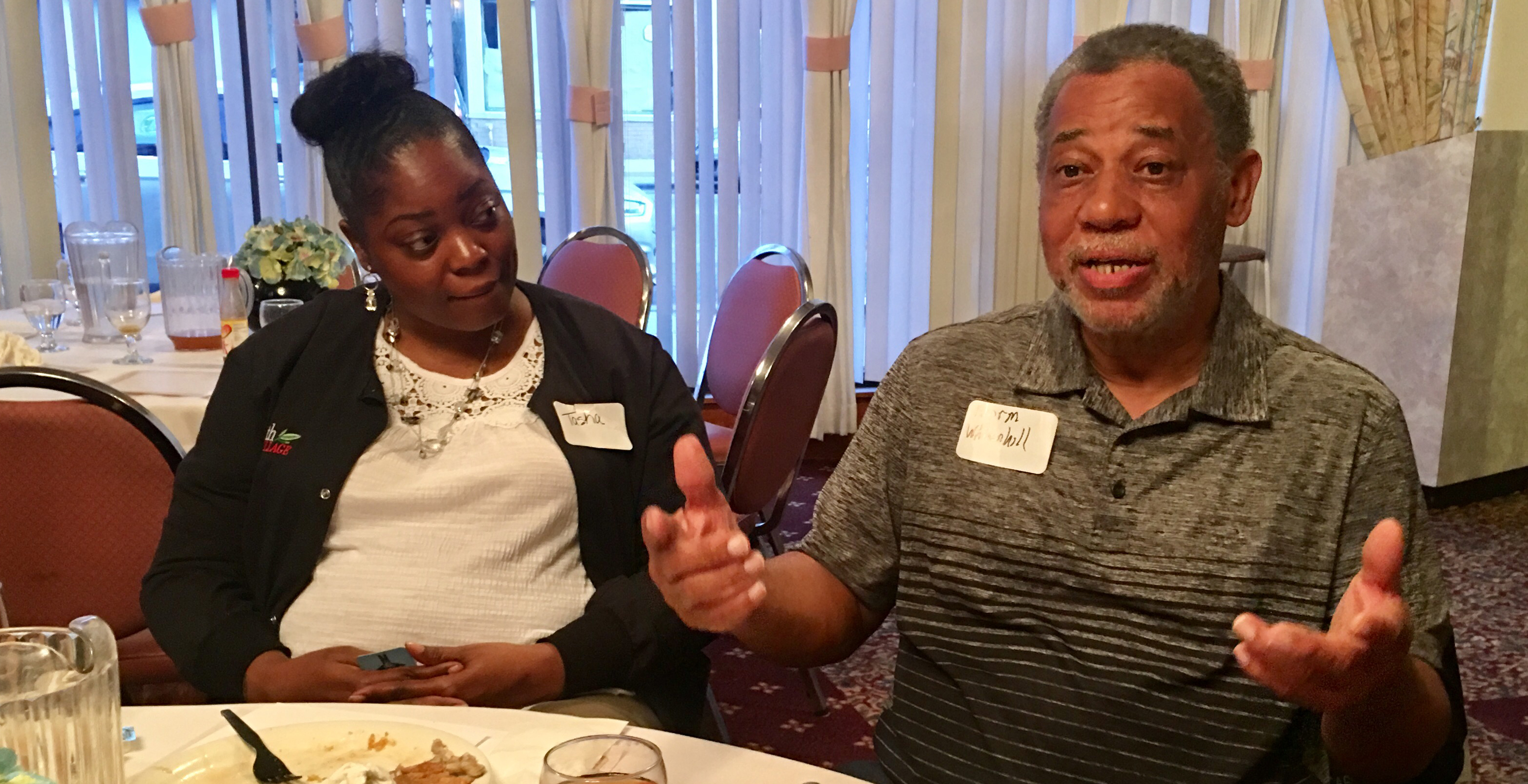
What Role do Block Clubs Play in Chicago?
Discussion seeks to revitalize, leverage technology, and connect block clubs throughout the city
Norm Whitenhill, a West Pullman resident, says he and his wife were one of the first African-American families to move on their block in 1974.
They moved into their home on 121st and South Prairie and have seen a lot of transformations in the surrounding area…some good, some not so good. He believes that his club has kept his particular block “stable.”
“Knowing who’s on the opposite end of the block or the other side of the street, and how the two of you interact with each other, being a benefit and not a hindrance; to me, that’s the role of a block club,” said Whitenhill, whose wife is president of their block club. “It’s about how we work together to keep our areas safe, clean, effective and productive.”
A discussion on the relevance of block clubs and how they operate given the matters of the day was the topic of an On The Table event held in Chatham at Captain’s Hard Times Dining (436 E. 79th St.) — The Chicago Community Trust holds this citywide event so people can engage in conversations on pertinent issues, with the goal of creating change.
For this gathering, the three partnering organizations — The Chicago Bungalow Association, Block Club Chicago, and My Block My Hood My City (MBMHMC) — invited about 15 block club leaders from the city’s South Side, asked participants to define a block club, give perspective on how their block club fits in to their neighborhood, voice concerns and share how they’ve made an impact; positive outcomes around public safety and cleanliness were among the most cited influences.
MBMHMC founder Jahmal Cole was driven to bring the block clubs together for one reason: resources. He intends to apply for the Acting Up Awards, and should he win, he plans to split the monies among the block clubs, adding that he also wants to connect the block club leaders with his more than 4,000 volunteers.
Another goal Cole has is to introduce and encourage block clubs to implement more technology in their daily operations. “I want to connect block clubs to technology like Facebook, so there will be more interconnectivity between their members,” he said.
“One of the things I notice when I run through Chatham every morning are the block club signs, and how they are decaying, how the wood and paint is chipping, so I wanted to update the signs,” Cole said. Through the MBMHMC One Block At a Time initiative, 15 block club leaders are receiving new signs, and last August, the initiative’s application process awarded 10 block clubs with new signs.
Homeowner Gloria Davis has lived on the 8400 block of South King Drive for 25 years. She said she’s grateful for what Cole is trying to do, and she appreciates the Block Club’s efforts.
“I’m happy to see Jahmal put forth this effort to get people out, to talk about what we would like to see, what’s working and what’s not working, and putting together some ideas of how we can make it come together,” Davis said. “Today our voices are being heard, the people here care and they want to know what we think.”
Block Club Chicago’s co-founder and managing editor, Stephanie Lulay, said the organization worked with Cole in the past, when she was with DNAinfo Chicago.
“He was a huge supporter of us starting Block Club Chicago, kind of the DNAinfo 2.0. We realized this time around it was going to be very important for us to have conversations like this all the time with communities,” Lulay said, noting that the meeting was an opportunity to hear directly from people in the community about potential stories, and the people, places and events they should note in Block Club Chicago’s work.
This is a story about the Community Safety and Peace strategy of the Partnership for Safe and Peaceful Communities.


